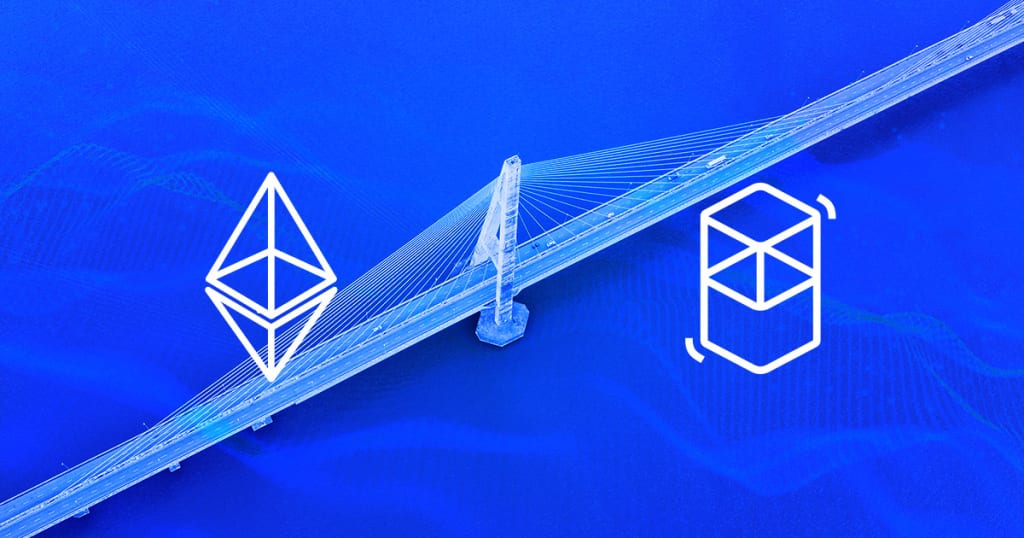
The future of distributed blockchain networks requires simple interactions and interoperability. Since the establishment of Bitcoin in 2009, the number of blockchain networks with various designs and functions has skyrocketed.
What is a blockchain bridge?
A blockchain bridge (also known as a crosschain bridge), like a physical bridge, connects two points. It facilitates communication between two blockchain networks by assisting in the transfer of data and digital assets. Both chains may have different protocols, rules, and governance structures, but bridges provide a secure means for both chains to interoperate (that is, communicate and share data). .. Blockchain bridges can be designed to exchange all kinds of data, including Bridge Smart Contract Development Services calls, decentralized identities, and off-chain information such as stock market price feeds.
Let’s take a closer look at the specific benefits offered by blockchain bridges.
Cross-chain transaction
Each blockchain has its own limitations as all blockchains are created in an ecosystem protected using their own set of rules and consensus protocols. As a result, there is no direct communication or token transaction between blockchains. Blockchain bridges, on the other hand, allow the transfer of tokens and information from one chain to another.
Low network traffic
Blockchain bridges help minimize the traffic of crowded blockchains such as the Ethereum ecosystem and distribute them to other uncrowded blockchains to enhance the scalability of the Ethereum network.
Enhanced developer experience
Developers creating DApps on the Ethereum network often have a negative experience due to slow transaction processing speeds and high gas charges, especially when the traffic is heavy and congested. However, blockchain bridges allow other blockchains to process the same token faster and at lower cost. Various blockchain developers continue to work together to create new user platforms.
Obstacle to monopoly
Cross-chain technology also contributes to market stability by reducing monopolies by key entities. For example, Bitcoin and Ethereum are the most popular cryptocurrencies, accounting for more than 70% of the total market share. As a result of this dominance, there is little room in the market for new companies to test their tactics and gain a foothold in the current competition.
How does the blockchain bridge work?
Consider the example of two blockchain networks, Chain A and Chain B.
When transferring a token from chain A to chain B, the bridge can be designed to lock the token to chain A and create a new token in chain B. In this scenario, the total number of circular tokens remains constant, but is split into two chains. .. If chain A holds 15 tokens and then transfers 5 tokens to chain B, then chain A has 15 tokens (5 tokens are locked), but chain B has 15 tokens. Has 5 more tokens.
Owners of minted tokens can redeem them at any time. You can burn (or destroy) them from chain B and unlock (or unlock) them with chain A. Chain A always owns a locked copy of each token, so its value matches the market price of Chain A. This “lock and mint” and “burn and release” procedure keeps the amount and cost of tokens transferred between the two chains constant.
What are some different types of blockchain bridges?
Blockchain bridges can be divided into two categories: trust-based bridges and untrusted bridges.
Trust-based bridge
A trust-based bridge, also known as a federation bridge or custodial bridge, is a centralized bridge that needs to perform federation of a central entity or mediator. To convert a coin to another cryptocurrency, Cross chain bridge development the user must rely on the members of the federation to validate and verify the transaction. Federation members are primarily incentives to keep executing transactions. They are not focused on identifying and preventing fraud. Trust-based bridges can be a fast and cost-effective option when transferring large amounts of cryptocurrencies. However, it is important to understand that federation members are primarily motivated to continue executing transactions rather than identifying and preventing fraud.
Unreliable bridge
Trustless bridges are decentralized bridges that rely on machine algorithms (that is, smart contracts) to operate. This type of bridge acts like a real blockchain, with individual networks helping to validate transactions. Untrusted bridges can provide users with greater security and flexibility when moving cryptocurrencies.
Let’s look at some concrete examples of blockchain bridges.
Binance Bridge
Binance Bridge allows users to transfer assets between the Binance chain and other chains such as Ethereum using tokens wrapped in the Binance Smart Chain. Binance Smart Chain (BSC) is an Ethereum-compatible blockchain that supports smart contracts in the same way as Ethereum, but at a lower cost. BSC uses the BEP20 standard token.
Wormhole portal
Portal offers unlimited asset transfers between Solana and several other DeFi blockchains such as Ethereum, Terra, Binance Smart Chain, Avalanch, oasis and Polygon.
Wrap Protocol (Plenty Bridge)
The Wrap Protocol, which will soon be rebranded as Plenty Bridge at the time of this writing, can be used to transfer ERC20 and ERC721 tokens between the Tezos network and Ethereum, Polygon, and BSC. The Tezos blockchain uses a validation node called Baker to implement the Proof of Stake consensus algorithm.
Avalanche Bridge
The Avalanche Bridge (AB)
can be used to transfer assets between the Avalanche Proof of Stake blockchain and Ethereum. According to the documentation , an avalanche transaction in AB can take a few seconds, while an Ethereum transaction can take up to 15 minutes.
How does the blockchain communicate?
Interoperability refers to the ability of blockchains sharing the same underlying architecture to communicate with each other to facilitate information sharing. This is the ability to monitor and access data stored on another blockchain. Due to interoperability, when information is delivered to another blockchain, the other user can access it and react effectively.
Crosschain is a technology that enables interoperability between two relatively independent blockchains. Build a cross chain bridge technology seeks to eliminate the need for intermediaries and third parties to connect two blockchain networks, thereby improving interoperability and helping maintain decentralization of blockchain technology.
Asset exchanges and asset transfers are the most common forms of cross-chain implementation. Both are essential aspects of the blockchain world and are the focus of important research on PPIO (peer-to-peer input / output).
About the Creator
Sandyzakk
Enter and create digital economies, leveraging blockchain technology with our Metaverse development services. Design, build, and launch amazing experiences for your users effectively with a leading metaverse development company.






Comments
There are no comments for this story
Be the first to respond and start the conversation.